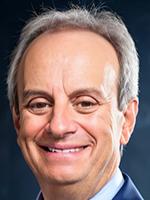
Event Information

Depending on the format selected by the conference, 20% of the session time will be presentation, 60% hands-on activities, and 20% will be dedicated to audience questions and planning for the future.
The following topics will be addressed and illustrated via visuals, anecdotes, research, and video from global efforts. • Introduction to the state of early childhood computing praxis and research.
• A very brief overview of key ideas from the Reggio Emilia approach
• The intersection of constructionism, Reggio Emilia approach, and project-based learning
• What learner-centered traditions like process writing and open education offer for making computing accessible to young children (and their teachers)
• Teacher as researcher and collaborative action research
• Models of this new approach to computing and young children
• Sharing examples of what children are capable of creating via computer programming
• A discussion of learner outcomes
• Making learning visible and communicating knowledge demonstrated via student computing artifacts
• Student/teacher programming as a form of professional learning
• An invitation for collaboration
• The affordances and constraints of a variety of exciting new computational environments that may be used to support project-based numeracy development.
• Discussion, feedback, and questions
Bers, M. U. (2008). Blocks to Robots Learning with Technology in the Early Childhood Classroom: Teachers College Press. Bers, M. U., Flannery, L., Kazakoff, E. R., & Sullivan, A. (2014). Computational thinking and tinkering: Exploration of an early childhood robotics curriculum. Computers & Education, 72, 145-157. Edwards, C., Gandini, L., & Forman, G. (2011). The Hundred Languages of Children: The Reggio Emilia Experience in Transformation: The Reggio Emilia Experience in Transformation: ABC-CLIO. Graves, D. H., & Murray, D. M. (1980). Revision: In the writer's workshop and in the classroom. The Journal of Education, 162(2), 38-56. Graves, D., Tuyay, S., & Green, J. (2004). What I've learned from teachers of writing. Language Arts, 82(2), 88.
Graves, D. H. (1994). A fresh look at writing. Portsmouth, NH.: Heinemann.
Papert, S. (1993). The Children's Machine: Rethinking School in the Age of the Computer. NY: Basic Books.
Papert, S. (1993). Obsolete skill set: the 3Rs; literacy and letteracy in the media ages. Wired, 1.2(May/June), 52. Retrieved from http://www.wired.com/wired/archive/1.02/1.2_papert.html Rinaldi, C. (2006). In dialogue with Reggio Emilia : listening, researching and learning. London ; New York: Routledge. Rinaldi, C. (2002). Teachers as researchers. Presentation. Presentation at ReFocus One Symposium. Kendal, UK. Rinaldi, C. (1999). Visible listening. echild,, 3(7).
Thyberg, L. F., & Southworth, H. (1988). A descriptive analysis of student behaviors and attitudes using logo programming as a vehicle in the writing process: University of Pittsburgh.
